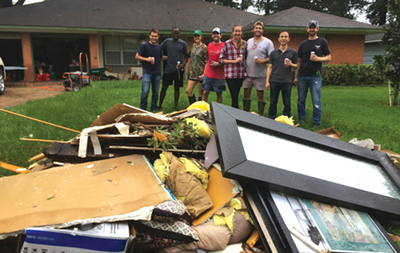In Case of Emergency
Most higher education institutions have protocols in place that they hope will guide them through any number of crises. But these protocols often were created based on either their own past experiences or those of other similar institutions.
But what if a tragedy strikes that is more far-reaching or unforeseeable than a school’s administrators ever imagined?
The summer of 2017 brought many such unexpected and unprecedented circumstances to the doorsteps of several business schools. We spoke to administrators from Rice University, IPADE, Sonoma State University, and the University of Virginia. They all helped their academic communities “weather the storms”—in one case, quite literally. We asked them how their schools had prepared, how they handled each emergency’s minute-by-minute demands, and what they could have done differently.
We also asked them to answer one important question: How should other schools prepare to face the unimaginable if it also happens to them? We share the responses and experiences of each of these academic leaders in the four stories below.
|
‘It Wouldn’t Stop Raining’Peter Rodriguez describes how the Jones Graduate School of Business, along with the broader Rice University community, mobilized to develop new protocols in real time as Hurricane Harvey struck Houston. |

‘A Day of Mourning’Rafael Gómez Nava explains how IPADE organized a regionwide emergency response after an earthquake strikes southern Mexico on September 19, 2017. |

‘The Other Side of Tragedy’William Silver of Sonoma State University discusses the importance of turning his school into a major force in the response and rebuilding efforts after wildfires ravage Northern California in October 2017. |

‘They Changed the Script’Martin Davidson of the University of Virginia shares how the Darden School facilitated important conversations after white supremacists march in Charlottesville, Virginia, on August 11 and 12, 2017. |
Shared Experiences, Lessons Learned
As natural disasters and social tensions mount worldwide, it’s inevitable that more business schools will weather unexpected, and potentially severe, states of emergency. Through sharing their experiences, the b-school leaders featured above believe they can better refine their schools’ protocols for the future. Together, these administrators offer some collective words of wisdom:
- Connect with community. A business school must view itself as an integral part of the community, says Gómez Nava of IPADE. “Our work with the states of Morelos and Puebla helped us endorse our social commitment not just to our students and their families, but to society.”
- Fall back on your values. “There is no playbook for situations like these. You can’t predict which unthinkable thing might happen, so you have to go with your gut. At the core of your gut are your values—what you stand for and who you are as a leader, school, and community,” says Silver of Sonoma State. “I’ve been part of too many planning exercises where people skip through the values stage to get to mission and vision, because they think discussing values is unimportant. But values inform everything. They’re what you can draw from when you don’t have time to plan.”
- Imagine the unimaginable. It's important for administrators to think ahead and imagine, and prepare for, absolute worst-case scenarios, says Rodriguez of Rice University. “We had severe-weather protocols, but we didn’t have protocols in place for a full-on, once-in-500-years flood. As business schools, we almost never do,” he notes. “You never want to imagine that a crisis like this will happen. Now, though, it’s easier for me to see how vulnerable we are to these crises and natural disasters. We should be talking more about what we need to do to get through them.”
- Harness the power of the moment. “No one wants this kind of tragedy to happen,” says Davidson of the University of Virginia. “But when it does, take advantage of the energy that comes out of it. Use it to make changes that will make your institution better. That’s been a powerful lesson.”
These deans hope their stories will not only help other academic leaders learn more about what it takes to adopt spontaneous action plans, but also inspire them to put plans in place before they find themselves and their schools facing similar threats. Then, once they’ve created those plans, they can only hope that they’ll never need to use them.







